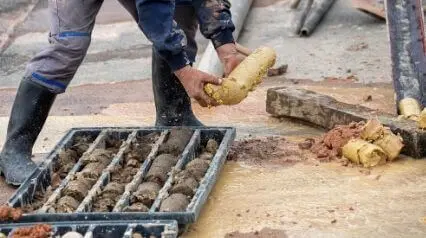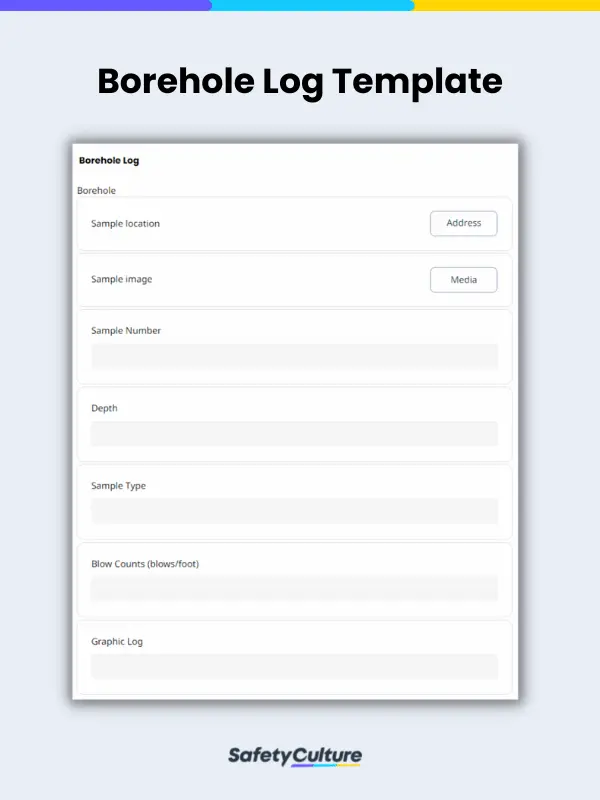What is Soil Boring?
Soil boring is the practice of taking soil samples from a parcel of land to determine its condition, properties, and suitability for planned construction projects. Geotechnical engineers use tools including soil probes or machine augers to extract soil samples for analysis, checking primarily for seismicity, hydrology, and chemical presence that may indicate potential contamination.
What is a Borehole Log and Why is It Important?
A borehole log documents the information collected by geotechnical engineers from the extracted soil samples. Borehole logs are important for a number of industries, but they are most prominently used to improve construction quality and safety, and inform real estate transactions.
In the construction industry, a comprehensive borehole log allows engineers and architects to create/adjust construction plans based on the soil’s condition and suitability for the intended structure.
State laws often require the investigation of lots for sale by taking soil samples so pre existing environmental conditions and soil contamination is taken into account before property ownership is transferred. This way, potential buyers are made aware of a lot’s condition through documented evidence before proceeding with transactions.
Borehole Log: 5 Most Essential Information
A good borehole log, sometimes called soil boring log, is a comprehensive documentation of findings from soil boring activities and soil sample analysis. Below are some of the most noteworthy details found in borehole logs:
1. Historical site records
Before land is sold to a buyer or preparations for construction work are begun, historical site records must be reviewed to ensure that no health or work hazards are present in the form of chemically contaminated soil, and/or unfit soil conditions.
This section of the borehole log contains information on the land’s previous uses, including former structures and establishments that occupied it. This gives potential buyers vital insights that may inform their decision to acquire the lot for sale, and construction professionals useful data to supplement structural plans and strategies.
2. Soil condition and properties
Engineers, architects, and drilling professionals need to factor in the soil condition and properties of a targeted construction site before they can make plausible construction plans. Elements such as particle size, soil density, hardness, softness, and consistency, tell construction professionals which structure types can be supported by a certain site, and what needs to be done to improve the safety aspect of design and construction blueprints.
3. Depth to bedrock
Knowing how deep the soil and outer layers go before reaching bedrock is essential to the safety and stability of structures, especially in earthquake prone areas. Aside from safety concerns, the depth to bedrock also influences construction plans by increasing or decreasing excavation time and associated costs.
4. Plasticity
Plasticity is defined as the soil’s ability to bend and undergo deformation without cracking or breaking apart. Soil plasticity is directly affected by water content and particle size. It is important to know the optimal level of plasticity as it directly corresponds to soil strength which translates to a higher bearing capacity.
5. Blow count
In a standard penetration test (SPT), blow counts are used to determine the overall strength and density of soil. To measure the blow count, a weighted drive hammer will be dropped repeatedly onto the soil, counting the number of blows it takes to drive down per 6 inch increments. Recording the blow count in the borehole log lets engineers make the necessary adjustments to prime the site for planned constructions.
Digital Soil Boring Logs for Efficient Data Entry and Documentation
Borehole logs, also called soil boring logs, are important documents that directly influence the safety and quality of planned structures. Though typical borehole logs are documented through paper, going digital presents a number of advantages that help ease the process for geotechnical engineers:
- Paper borehole logs are susceptible to loss, damage, and unauthorized access while digital logs are automatically saved in the cloud and can only be accessed by authorized personnel.
- Digital boring logs take advantage of smart form technology, making data entry easy through versatile templates that adapt and adjust to the needs of the user for added efficiency.
- Paper borehole logs need to be manually printed, documented, and distributed, while digital borehole logs can automatically generate and share reports with key stakeholders.



